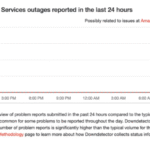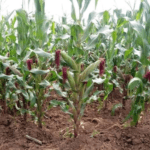Learn Essential Syntax and Key OOP Concepts In Simple ways
Reading Time: 3 minutesDid you know that you can learn Python programming by starting with the basic syntax and gradually building your skills to become an advanced programmer? Below, you’ll find an explanation of key relationships in programming, including aggregation, composition, and association RELATIONSHIP IN OOP (Composition, Aggregation, Association) In Object-Oriented Programming (OOP), relationships among classes are crucial for building flexible, reusable, and well-structured systems. Three primary types of relationships define how objects and classes interact: Association, Aggregation, and Composition. Let’s explore each in detail. 1. Association Association is a broad term that describes any relationship between two or more classes. It indicates that objects of one class are related to objects of another, but neither class owns the other. It’s essentially a “uses-a” or “has-a” relationship, meaning that objects can be linked without any lifecycle dependency. class Teacher: def __init__(self, name): self.name = name def teach(self): print(f”{self.name} is teaching.”) class Student: def __init__(self, name): self.name = name def learn(self): print(f”{self.name} is learning.”) # Creating instances teacher = Teacher(“Mr. Smith”) student = Student(“Alice”) # Association: The teacher and student can interact with each other teacher.teach() student.learn() Explanation: Read Also: How to Optimize AdSense Click Tracking On the Website 2. Aggregation Aggregation is a specialized form of association representing a “whole-part” relationship. The key feature of aggregation is that the “whole” and the “part” can exist independently. This is known as a weak relationship since the lifecycle of parts does not depend on the lifecycle of the whole. class Department: def __init__(self, name): self.name = name self.teachers = [] # Aggregating Teacher objects def add_teacher(self, teacher): self.teachers.append(teacher) def list_teachers(self): for teacher in self.teachers: print(teacher.name) class Teacher: def __init__(self, name): self.name = name # Creating instances teacher1 = Teacher(“Mr. Smith”) teacher2 = Teacher(“Ms. Johnson”) department = Department(“Math Department”) # Aggregation: A department can contain teachers department.add_teacher(teacher1) department.add_teacher(teacher2) department.list_teachers() Explanation: 3. Composition Composition is a stronger form of association representing an even more tightly coupled “whole-part” relationship. In this relationship, the lifecycle of the part depends on the lifecycle of the whole. When the “whole” is destroyed, all of its parts are also destroyed. class Engine: def __init__(self): print(“Engine created”) def start(self): print(“Engine started”) class Car: def __init__(self, make): self.make = make self.engine = Engine() # Car “has-a” Engine (composition) def drive(self): self.engine.start() # The car needs the engine to drive print(f”{self.make} is driving.”) # Creating a Car object my_car = Car(“Toyota”) my_car.drive() Explanation: Summary Table Relationship Definition Lifecycle Dependency Example Association General relationship between classes None Teacher ↔ Student Aggregation Whole-part relationship Parts are independent Library ↔ Book Composition Whole-part relationship Parts depend on the whole House ↔ Room When to Use Each Relationship These relationships enable effective class design, helping you decide how tightly or loosely coupled your objects should be, which affects reusability, testability, and maintainability.




